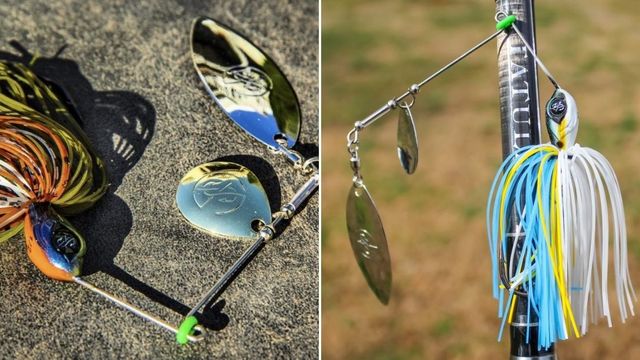
Spinnerbait Tips: When To Throw Colorado Blades Vs. Willow Blades
The spinnerbait is about as tried and true as it comes for bass lures – you’d be hard pressed to find an angler worth his salt that hasn’t caught at least a bass or two with the old safety pin. Spinnerbait tips come in all shapes and sizes, but rarely focus on the description of the blades attached. One of the reasons for that is because of their versatility. You can effectively fish a spinnerbait in shallow water, deep water, and in just about any water conditions imaginable.
The key to this versatility is the fact that you can customize them in almost infinite ways. By altering the weight, skirt color, and blade combinations, you can emulate just about any prey fish available from coast to coast.
Of all these alterations, the one that has the most impact on your results is the blade combination, as different blade styles impart dramatically different performance on a spinnerbait. One of the most important spinnerbait tips you can receive is pay attention to your blade choice. The key to choosing that right blade combination lies in understanding what each of the two dominant blade styles – Colorado and willow, do to the action of a spinnerbait.
Colorado Bladed Spinnerbaits
Lunkerhunt Impact Thump Colorado Blade Spinnerbait
With a wide rounded profile and a deep cup, Colorado blade spinners like the Lunker Hunter Thump displace a ton of water when they rotate. This causes spinnerbaits with Colorado blades to produce lots of thump and vibration. For that reason, Colorado blades are ideal in dirtier water, when bass need to rely more on their lateral lines to hone in on their prey. Because they displace so much water, Colorado blades also need to be retrieved more slowly, which makes them really effective in colder water.
Willow Bladed Spinnerbaits
Karl's Double Willow Bladed Spinnerbait
Willowleaf bladed spinners like the Googan Squad Zinger have a narrow elongated body, and generally have less cup than a Colorado blade. Instead of thump, willow blades excel at generating flash – projecting a realistic baitfish image for a long distance. In clear water, bass are primarily visual feeders, making willow blades ideal choices whenever there is good visibility. Their lack of thump also allows them to track truer when moving quickly – which means they are most effective mid-summer, when water is at its warmest and bass are most active
Updated December 10th, 2021 at 9:56 AM CT
